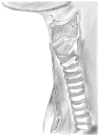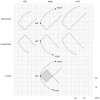A Contemporary Review of Trachea, Nose, and Ear Cartilage Bioengineering and Additive Manufacturing
- PMID: 38921207
- PMCID: PMC11202182
- DOI: 10.3390/biomimetics9060327
A Contemporary Review of Trachea, Nose, and Ear Cartilage Bioengineering and Additive Manufacturing
Abstract
The complex structure, chemical composition, and biomechanical properties of craniofacial cartilaginous structures make them challenging to reconstruct. Autologous grafts have limited tissue availability and can cause significant donor-site morbidity, homologous grafts often require immunosuppression, and alloplastic grafts may have high rates of infection or displacement. Furthermore, all these grafting techniques require a high level of surgical skill to ensure that the reconstruction matches the original structure. Current research indicates that additive manufacturing shows promise in overcoming these limitations. Autologous stem cells have been developed into cartilage when exposed to the appropriate growth factors and culture conditions, such as mechanical stress and oxygen deprivation. Additive manufacturing allows for increased precision when engineering scaffolds for stem cell cultures. Fine control over the porosity and structure of a material ensures adequate cell adhesion and fit between the graft and the defect. Several recent tissue engineering studies have focused on the trachea, nose, and ear, as these structures are often damaged by congenital conditions, trauma, and malignancy. This article reviews the limitations of current reconstructive techniques and the new developments in additive manufacturing for tracheal, nasal, and auricular cartilages.
Keywords: additive manufacturing; bioengineering; cartilage; ear; nose; reconstruction; septum; trachea.
Conflict of interest statement
The authors declare no conflicts of interest.
Figures





Similar articles
-
Toward tissue-engineering of nasal cartilages.Acta Biomater. 2019 Apr 1;88:42-56. doi: 10.1016/j.actbio.2019.02.025. Epub 2019 Feb 19. Acta Biomater. 2019. PMID: 30794988 Review.
-
Evaluation of the Usability of a Low-Cost 3D Printer in a Tissue Engineering Approach for External Ear Reconstruction.Int J Mol Sci. 2021 Oct 28;22(21):11667. doi: 10.3390/ijms222111667. Int J Mol Sci. 2021. PMID: 34769096 Free PMC article.
-
Tissue Engineering Auricular Cartilage: A Review of Auricular Cartilage Characteristics and Current Techniques for Auricular Reconstruction.J Craniofac Surg. 2024 Mar 5. doi: 10.1097/SCS.0000000000010015. Online ahead of print. J Craniofac Surg. 2024. PMID: 38441206
-
Multi-material 3D bioprinting of porous constructs for cartilage regeneration.Mater Sci Eng C Mater Biol Appl. 2020 Apr;109:110578. doi: 10.1016/j.msec.2019.110578. Epub 2019 Dec 20. Mater Sci Eng C Mater Biol Appl. 2020. PMID: 32228894
-
[Regenerative medicine of tissue engineering: auricular cartilage regeneration and functional reconstruction].Lin Chuang Er Bi Yan Hou Tou Jing Wai Ke Za Zhi. 2019 Jun;33(6):567-571. doi: 10.13201/j.issn.1001-1781.2019.06.024. Lin Chuang Er Bi Yan Hou Tou Jing Wai Ke Za Zhi. 2019. PMID: 31163539 Review. Chinese.
References
Publication types
LinkOut - more resources
Full Text Sources

